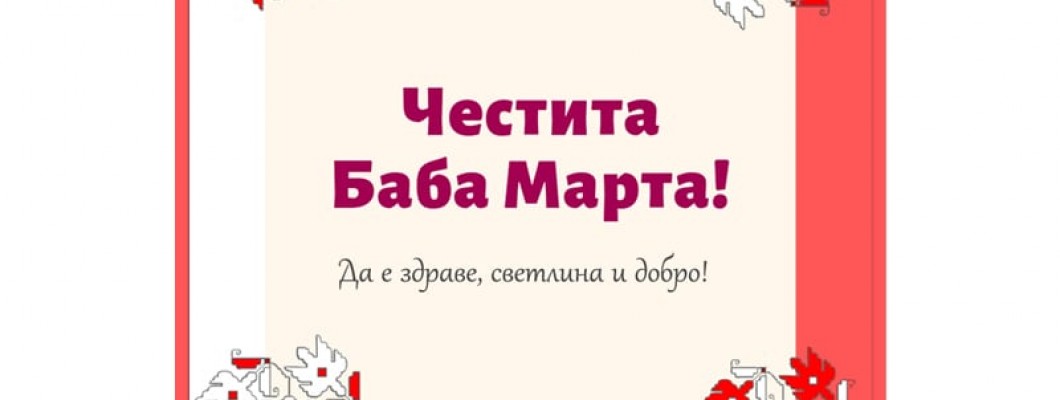
On March 1, Bulgarian Tradition demands Everyone to bind each other a martenitsa for health and luck throughout the year.
Martenitsa, which in some places is also called martinka, marta, martichka, fortune-teller, is a ritual ornament made of twisted white and red thread. We give it away on March 1st and wear it for health until we see a bloomed tree or stork.
Martenitsa colors have a sacred meaning - red is a symbol of the blood, creation and vitality, and white represents innocence and purity.
Baba Marta Day actually has ancient pagan roots associated with the coming spring and the beginning of the new agricultural cycle. The tying of twisted white and red woolen threads is a custom whose roots are found in Thracians and Hellenes. The ritual use of red and white is associated with pagan earthly cults and the reverence and the propitiation of nature.
The holiday marks the border between the winter that is going away, during which stagnant forces and energy was accumulated, and the coming spring and the awakening of nature. The rituals of this day have the purpose to banish and purify everything old and stagnant and ensure health, auspicious weather and a rich harvest.
Early in the morning, before sunrise, the mistress cleans her home, washes and dries the carpets and blankets. Then she brings out a red garment in the yard and throws it on a fruit tree or on the fence. Old people say this will make Baba Martha smile and weather will be nice all the year.
The ritual cleansing of the house actually has a deep meaning - it is a dispatch of the winter, cleansing from the accumulated evil forces and welcoming spring and Baba Marta. The rubbish is accumulated in the yard and ignites and everyone tries to skip the fire for health. This custom is very widespread in the Rhodopes and is called "marten".
In folk tales, Baba Marta is a legendary woman with a rather fickle temper. When she gets angry the weather gets cold and biting, and when she is laughing the sun is warmly shining. Grandma Martha has two brothers, Big Sechko and Small Sechko (January and February), and she is often angry to them, for example, because they had drank her whole wine. Therefore, on March 1, her holiday, people should cheer her up, win her favor, and take great care not to provoke her anger.
Today, it is believed that Baba Marta, wearing a red dress, goes around the fields and people. Therefore, both fruit trees and animals must be bonded with red thread to be a fertile the year. And young and old, must be tied up for health with twisted white and red martens. The young people should go out today in order Baba Martha to see them and she become satisfied and happy.
Another rite performed on this day is the burning of a bundle of straw by the mistress of the house and the crawl of the whole house, the farm buildings with these words "Martha Parta, everything to run away." This ritual is associated with the expulsion of snakes, lizards and the symbolic cleansing from the evil forces accumulated in winter.
March is perceived as a feminine month because it is associated with the feminine onset, with the revival of nature and the coming spring. On this day, any woman can choose a day from March 1 to March 22, and she may guess what wil be the year that is coming. If the day is sunny and warm, the year will be good and successful, but if the weather of the chosen day is cold and bad, the year is expected to be difficult.


1 Comment(s)
You explained it perfectly. This made a big difference for me.
Leave a Comment